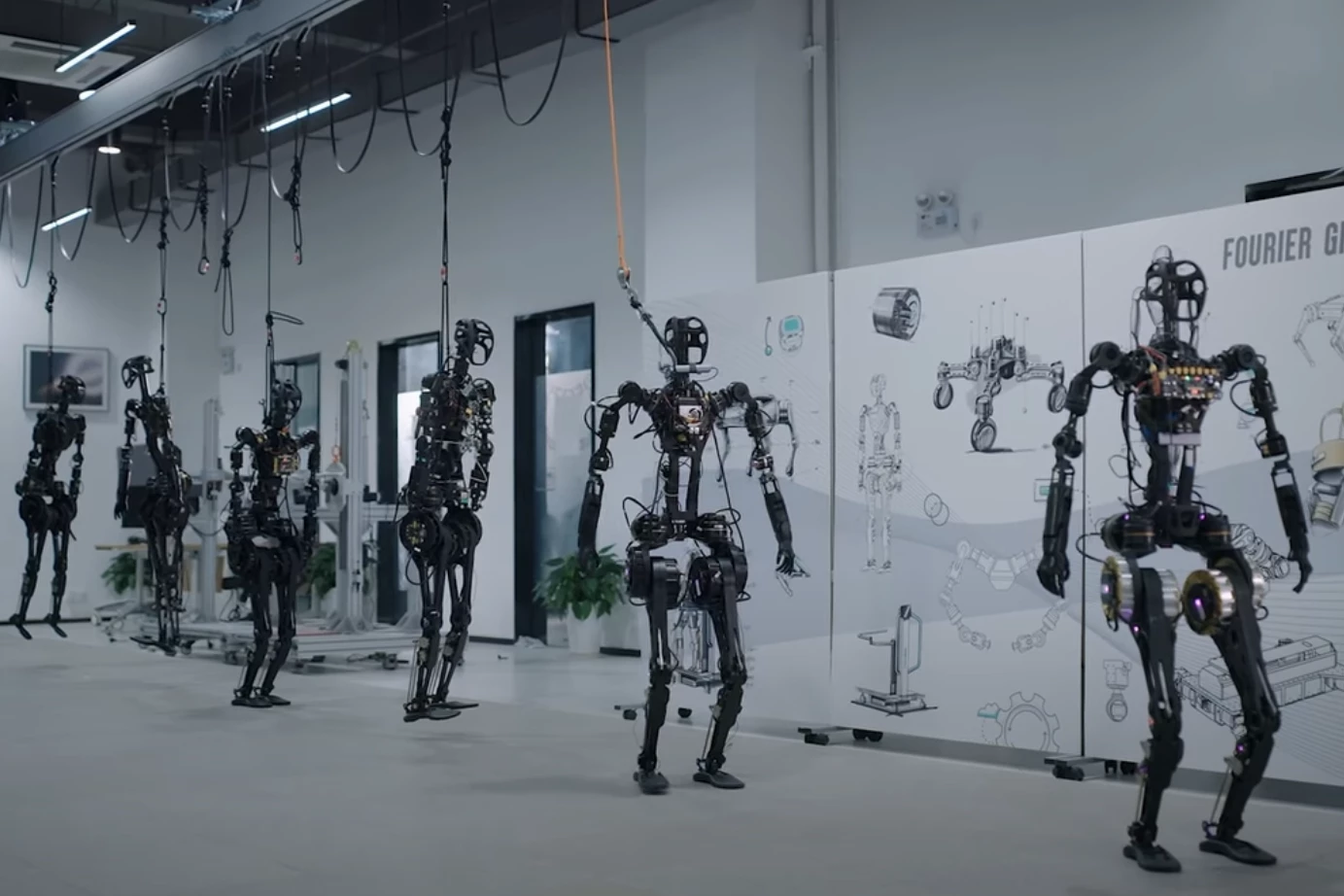As Tesla's Optimus robot shows off new capabilities in pick 'n' place sorting and one-legged yoga balancing, Singaporean company Fourier Intelligence has released new video showing the production process for its super-strong GR-1 humanoid.
Fourier claims the GR-1 can carry up to an extraordinary 50 kg (110 lb) of weight, thanks to a particularly beefy pair of robo-buttocks in the form of two 300-Nm (221-lb-ft) hip actuators.
Its arms and hands, though, look pretty spindly, and the company has flagged its intention that this robot will act as a rehab therapy assistant, with grab handles at its waist to help people stand up out of wheelchairs and beds. So there's every chance that's where these loads will be carried.
The company today released video of its production facilities, showing not just the assembly of robots, but the winding of coils in the custom-built actuators, banks of 3D printers for bodywork parts, disembodied hands apparently copying human motions on the test bench, and what appears to be a hand controller for the robot. Check it out:
This may well be a subtle response to Agility's claim last week that its upcoming RoboFab facility in Salem, Oregon will be the "world's first humanoid robot factory," a claim we questioned at the time, since Fourier had already stated its intention to ship 100 GR-1 humanoids out to customers by the end of the year.
Tesla, on the other hand, isn't talking about production yet – although as a company, it's certainly made some great strides in automotive manufacturing.
Instead, while Fourier is shipping the GR-1 out to a range of R&D partners, essentially, hoping to gain a range of perspectives on how to train and upskill the robot, Tesla is working in-house on autonomous operations and building capability into the Optimus robot.

Powered by the same high-spec vision-based computers Tesla uses in its "Full Self Driving" Autopilot system, Optimus is now able to precisely locate its own arms and legs, calibrating their positions in space just by looking at them. Tesla says this self-calibration system is helping the robot learn new tasks more efficiently.
One such task is picking up a bunch of blocks and sorting them into different bins by color, which the robot appears to do with aplomb, smoothly re-routing its activities when humans step in and move the blocks around and showing a capability to correct mistakes when the blocks aren't put down the right way up.
It's moving pretty slowly at the moment; most of the functional video is presented at 150% speed. But the movements do look deliberate, precise and fluid, and Optimus's hands appear to be working well. And balance is clearly not a problem – the video ends with a couple of smooth, one-legged yoga poses many humans would struggle to replicate. Take a look:
Both Optimus and the GR-1 are both still walking a bit like they've loaded up their britches, as the South Park team might say. Indeed, even after a decade of research, parkour, dancing and gymnastics, Boston Dynamics' Atlas robot still moves a bit like its diaper needs checking. It'll be interesting to see how quickly these things smooth out in the coming years, given the avalanche of capital coming into the sector.
The companies that get general-purpose humanoids into the market, operating safely and reliably in useful capacities and learning new tasks quickly and effectively, stand to put themselves in an unprecedented position. As these bots scale up, they promise to become tomorrow's labor force, cheaper and less complicated than humans, and capable of working multiple jobs around the clock, breaking only to charge up their batteries.
Extraordinary technology, and a pivotal moment for our species, with highly uncertain outcomes.
Sources: Tesla, Fourier Intelligence






